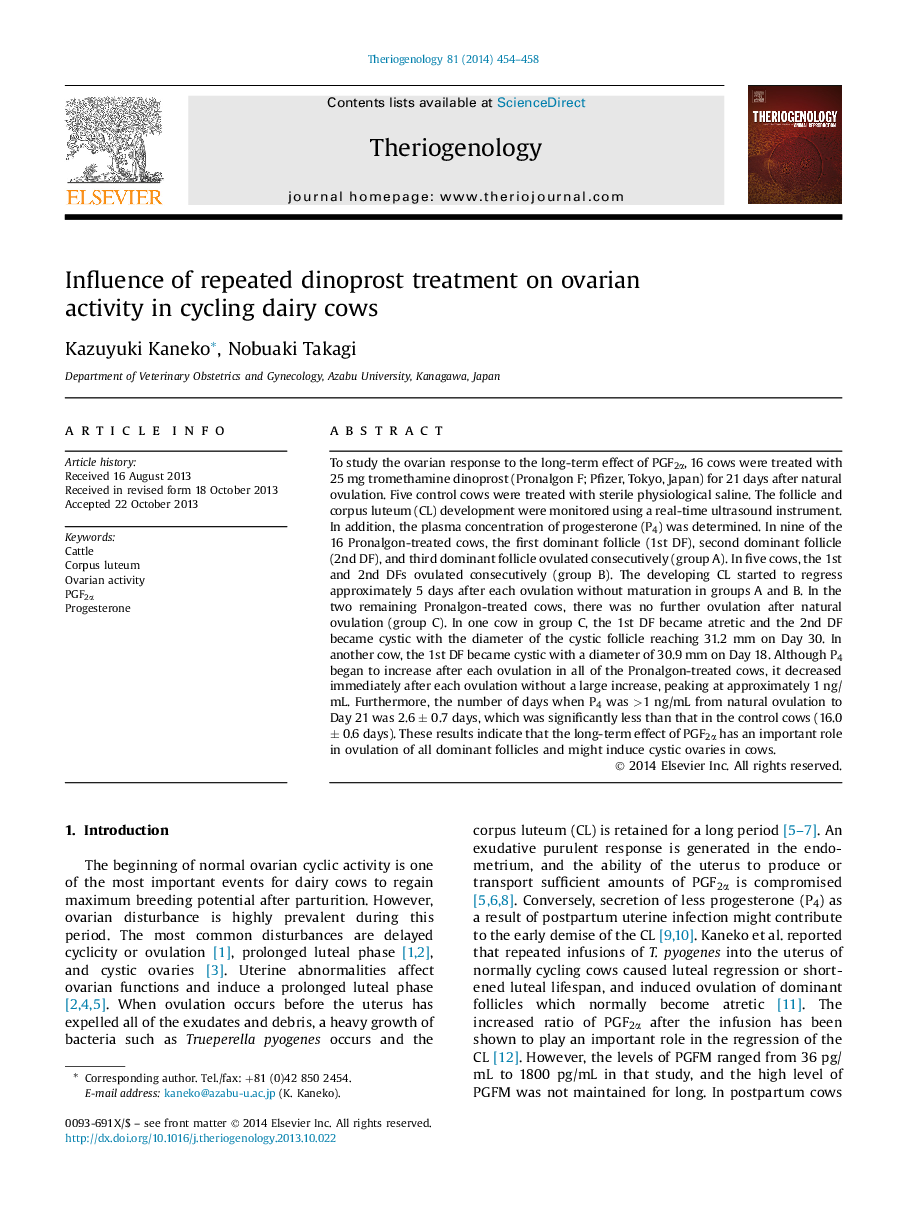| Article ID | Journal | Published Year | Pages | File Type |
|---|---|---|---|---|
| 2097559 | Theriogenology | 2014 | 5 Pages |
To study the ovarian response to the long-term effect of PGF2α, 16 cows were treated with 25 mg tromethamine dinoprost (Pronalgon F; Pfizer, Tokyo, Japan) for 21 days after natural ovulation. Five control cows were treated with sterile physiological saline. The follicle and corpus luteum (CL) development were monitored using a real-time ultrasound instrument. In addition, the plasma concentration of progesterone (P4) was determined. In nine of the 16 Pronalgon-treated cows, the first dominant follicle (1st DF), second dominant follicle (2nd DF), and third dominant follicle ovulated consecutively (group A). In five cows, the 1st and 2nd DFs ovulated consecutively (group B). The developing CL started to regress approximately 5 days after each ovulation without maturation in groups A and B. In the two remaining Pronalgon-treated cows, there was no further ovulation after natural ovulation (group C). In one cow in group C, the 1st DF became atretic and the 2nd DF became cystic with the diameter of the cystic follicle reaching 31.2 mm on Day 30. In another cow, the 1st DF became cystic with a diameter of 30.9 mm on Day 18. Although P4 began to increase after each ovulation in all of the Pronalgon-treated cows, it decreased immediately after each ovulation without a large increase, peaking at approximately 1 ng/mL. Furthermore, the number of days when P4 was >1 ng/mL from natural ovulation to Day 21 was 2.6 ± 0.7 days, which was significantly less than that in the control cows (16.0 ± 0.6 days). These results indicate that the long-term effect of PGF2α has an important role in ovulation of all dominant follicles and might induce cystic ovaries in cows.
